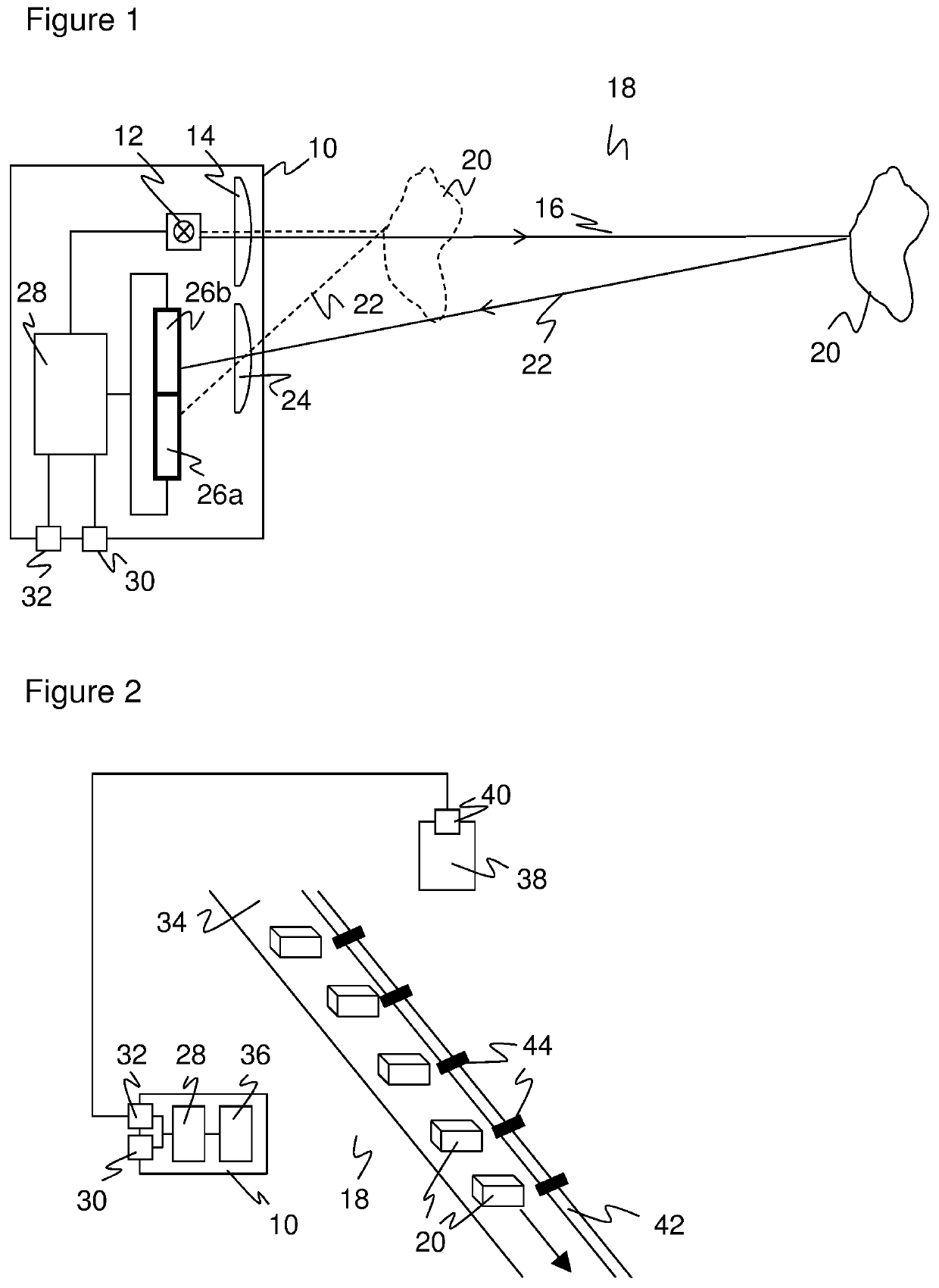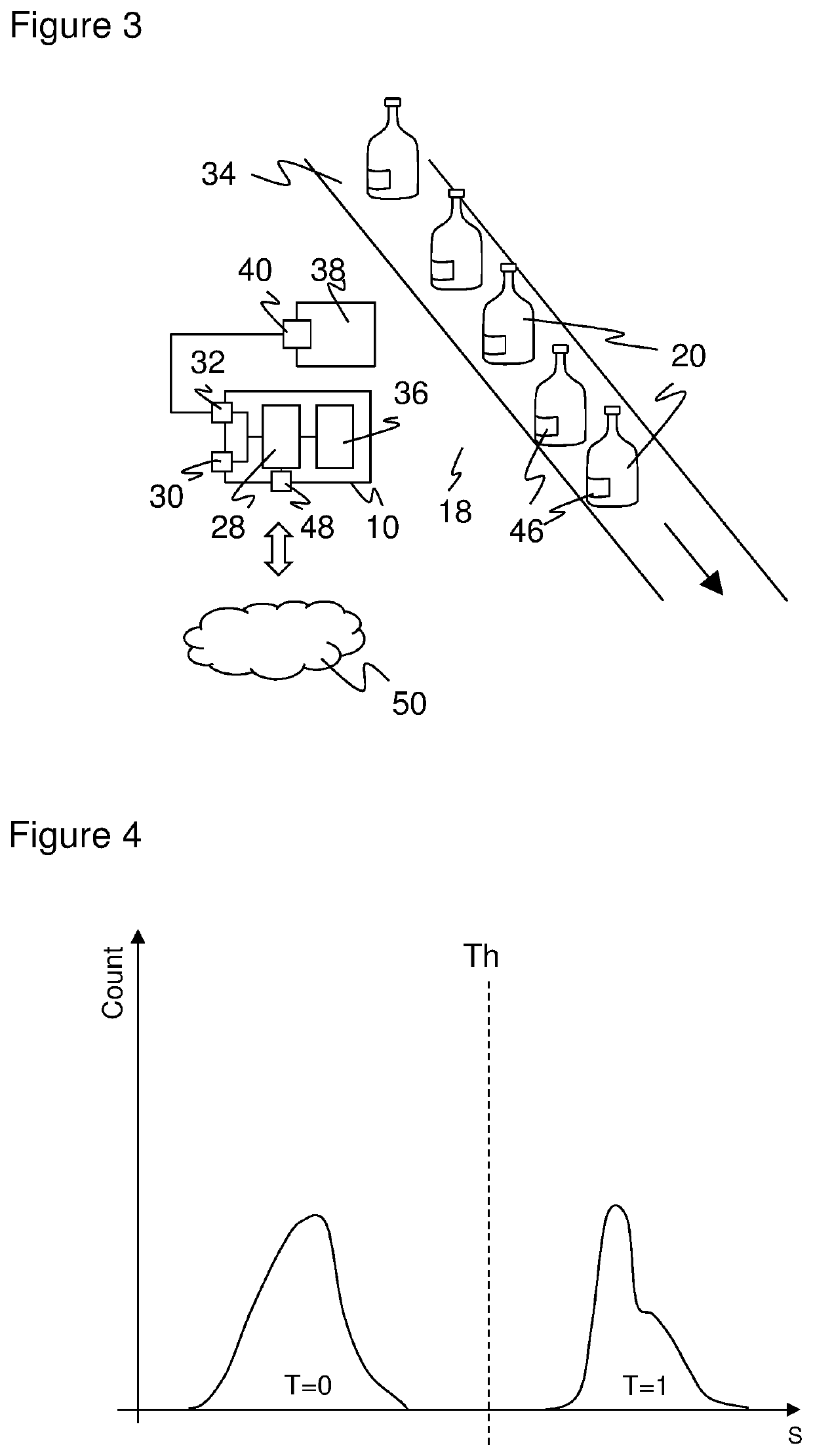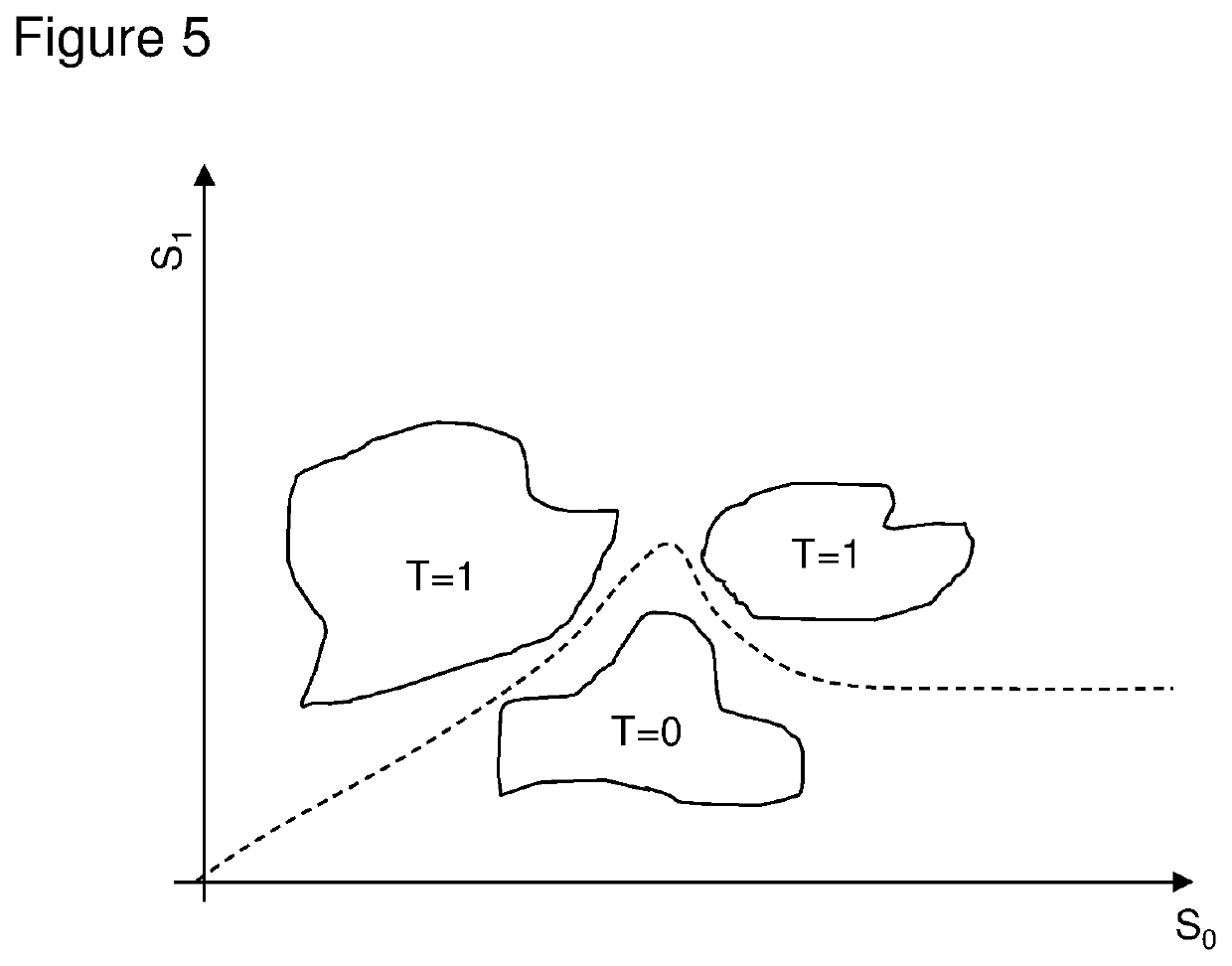Sensor for detecting an object and method of setting a switching point
a technology of object detection and sensor, applied in the direction of electronic switching, pulse technique, instruments, etc., can solve the problems of method reaches its limits, additional conditions can also become complex, and the minimum distance between the real object and the real background would have to be so large that it cannot even be realized in typical applications of the sensor, so as to achieve the effect of working more reliably and better detecting the situation to be detected
- Summary
- Abstract
- Description
- Claims
- Application Information
AI Technical Summary
Benefits of technology
Problems solved by technology
Method used
Image
Examples
Embodiment Construction
[0035]FIG. 1 shows a schematic sectional representation of a sensor 10 in an embodiment as a conventional triangulation light sensor with background masking. This is only one of a large number of embodiments of a sensor 10 in accordance with the invention with reference to which it should be explained purely by example how a sensor 10 detects an object determination signal by means of a settable switching point. The invention generally comprises sensors that delivery a binary object determination signal such as reflection light barriers, through beam light barriers, or distance-measuring light sensors in accordance with the principle of the time of flight process or of triangulation, but also inductive, capacitive, magnetic, ultrasound, or radar sensors and more.
[0036]In the embodiment of the sensor 10 in accordance with FIG. 1, a light transmitter 12 transmits a light beam 16 into a monitored zone 18 via a beam-shaping transmission optics 14. If the light beam 16 is incident on an ...
PUM
 Login to View More
Login to View More Abstract
Description
Claims
Application Information
 Login to View More
Login to View More - R&D
- Intellectual Property
- Life Sciences
- Materials
- Tech Scout
- Unparalleled Data Quality
- Higher Quality Content
- 60% Fewer Hallucinations
Browse by: Latest US Patents, China's latest patents, Technical Efficacy Thesaurus, Application Domain, Technology Topic, Popular Technical Reports.
© 2025 PatSnap. All rights reserved.Legal|Privacy policy|Modern Slavery Act Transparency Statement|Sitemap|About US| Contact US: help@patsnap.com



